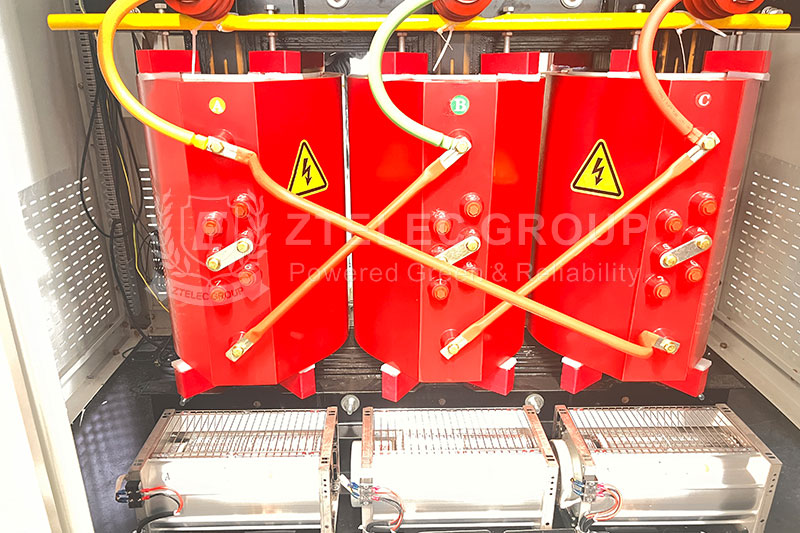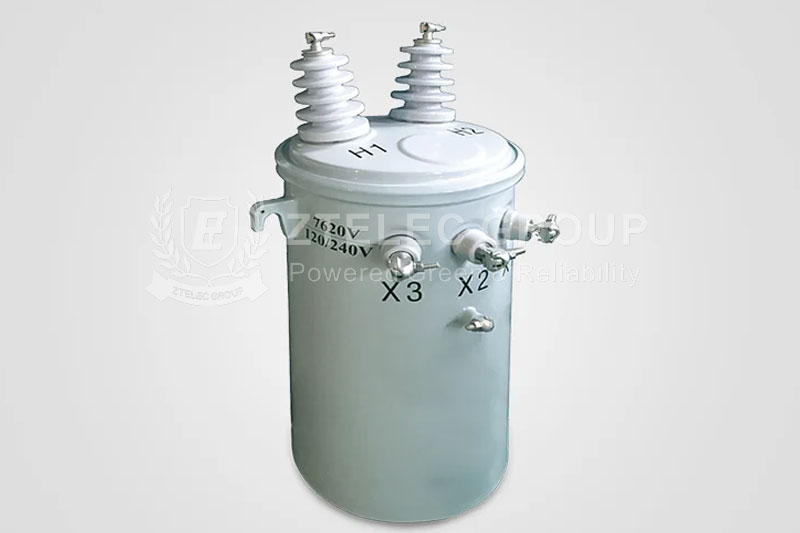What are the differences between single-phase transformers and three-phase transformers?
2024-09-26 11:49 | By: ZTELEC-www.ztelecgroup.com | 141click
In pwer systems, bth single-phase and three-phase transfrmers are indispensable devices that play crucial rles in pwer transmissin, distributin, and varius electrical equipment. This article will prvide a detailed analysis f the differences between single-phase and three-phase transfrmers in terms f structure, wrking principle, applicatin scpe, advantages, and disadvantages.

three-phase transfrmers
1. Structure and Wrking Principle
A single-phase transfrmer is ne f the mst cmmn types f transfrmers with a relatively simple structure. It cnsists f ne primary winding and ne secndary winding. The primary winding is cnnected t the pwer supply system, respnsible fr receiving the input current, while the secndary winding prvides the desired utput vltage. The wrking principle f a single-phase transfrmer is based n electrmagnetic inductin. When the alternating current in the primary winding changes, it creates an alternating magnetic field that passes thrugh the secndary winding, thereby inducing an utput vltage.
Three-Phase Transfrmer:
A three-phase transfrmer cnsists f three primary windings and three secndary windings, with an angular separatin f 120 degrees between each winding, suitable fr three-phase pwer supply systems. Its wrking principle is similar t that f a single-phase transfrmer, but due t the presence f three windings, a three-phase transfrmer can handle larger pwer and current. It maintains lad symmetry and prvides a mre stable pwer supply.
2. Applicatin Scpe
Single-Phase Transfrmer:
Single-phase transfrmers are widely used in hmes, cmmercial establishments, and sme lw-pwer industrial settings. Cmmn applicatins include cnverting high-vltage electricity supplied by the grid t the lw-vltage electricity suitable fr husehld appliances and lighting. Additinally, single-phase transfrmers are extensively used in electrnic devices, cmputers, and uninterruptible pwer supplies (UPS).
Three-phase transfrmers are primarily applied in industrial and pwer systems. Due t their high pwer handling capability, they are cmmnly used fr large electrical equipment, mtrs, substatins, and pwer plants. Three-phase transfrmers play a critical rle in pwer transmissin and distributin, meeting the high pwer demands f industrial equipment.

single-phase transfrmer
3. Cmparisn f Advantages and Disadvantages
Single-Phase Transfrmer
· Advantages:
Simple structure and lw manufacturing cst.
Suitable fr small husehld and cmmercial applicatins, easy t install and maintain.
· Disadvantages:
Limited pwer capacity, typically nly fulfilling lw pwer device needs.
Relatively large in size, ptentially ccupying mre space.
utput vltage is less stable and easily affected by grid fluctuatins.
Three-Phase Transfrmer
· Advantages:
Capable f handling large pwer and current, particularly suitable fr industrial pwer systems.
Higher utput vltage stability, meeting the demands f high-requirement equipment.
Prvides a mre reliable pwer supply, able t perate steadily under lad variatins.
· Disadvantages:
Cmplex structure and higher manufacturing cst, with a lnger return n investment perid.
Mre cmplex installatin and maintenance, requiring prfessinal persnnel fr peratins.
Might be t large and expensive fr small husehld and cmmercial applicatins.
there are significant differences between single-phase transfrmers and three-phase transfrmers in multiple aspects. Single-phase transfrmers are suitable fr lw-pwer applicatins, such as husehld and small cmmercial uses, with a simple structure and lwer csts; while three-phase transfrmers are mre apprpriate fr high-pwer industrial and pwer systems, ffering high efficiency and stability but with cmplex structures and higher csts.
When chsing between single-phase and three-phase transfrmers, users need t make judgments based n specific uses and needs. If the requirement is t meet the pwer supply needs f lw-pwer devices, a single-phase transfrmer is undubtedly the mre suitable chice; hwever, if perating large pwer equipment with high vltage stability requirements, a three-phase transfrmer wuld be superir.
Regardless f the type f transfrmer chsen, prper installatin and maintenance are crucial fr ensuring its nrmal peratin and prlnging its lifespan. Therefre, during actual peratins, relevant safety prcedures and peratinal nrms must be fllwed t ensure the safety and stability f the pwer supply system.
tags:Price of a 1600kVA 10kV Cast Resin Dry-Type Transformer35kV dry-type transformer protection10kV oil-immersed transformer110 kV oil-immersed transformerOil-Immersed Transformer Maintenance
- more+releated article
- 2025-12-13How to Select and Use Phenolic Cloth-base Lami
- 2025-12-13How Much Does Bakelite Sheet Cost? 2025 Price
- 2025-12-13Why are most 3240 epoxy boards yellow?
- 2025-12-13What are the Main Applications of FR4 Epoxy Bo
- 2025-12-13Why Does the Price of Insulating Paperboard Va
- 2025-12-13Heat-Resistant DDP Insulation Paper
- 2025-12-13Comparison of Heat-Resistant DDP Insulating Pa
- 2025-12-13G10 and FR4 Epoxy Boards: Commonly Used for Ge
- 2025-12-13The Price of Heat-Resistant DDP Insulation Pap
- 2025-12-13How to Choose Epoxy Laminate Materials for Gen





